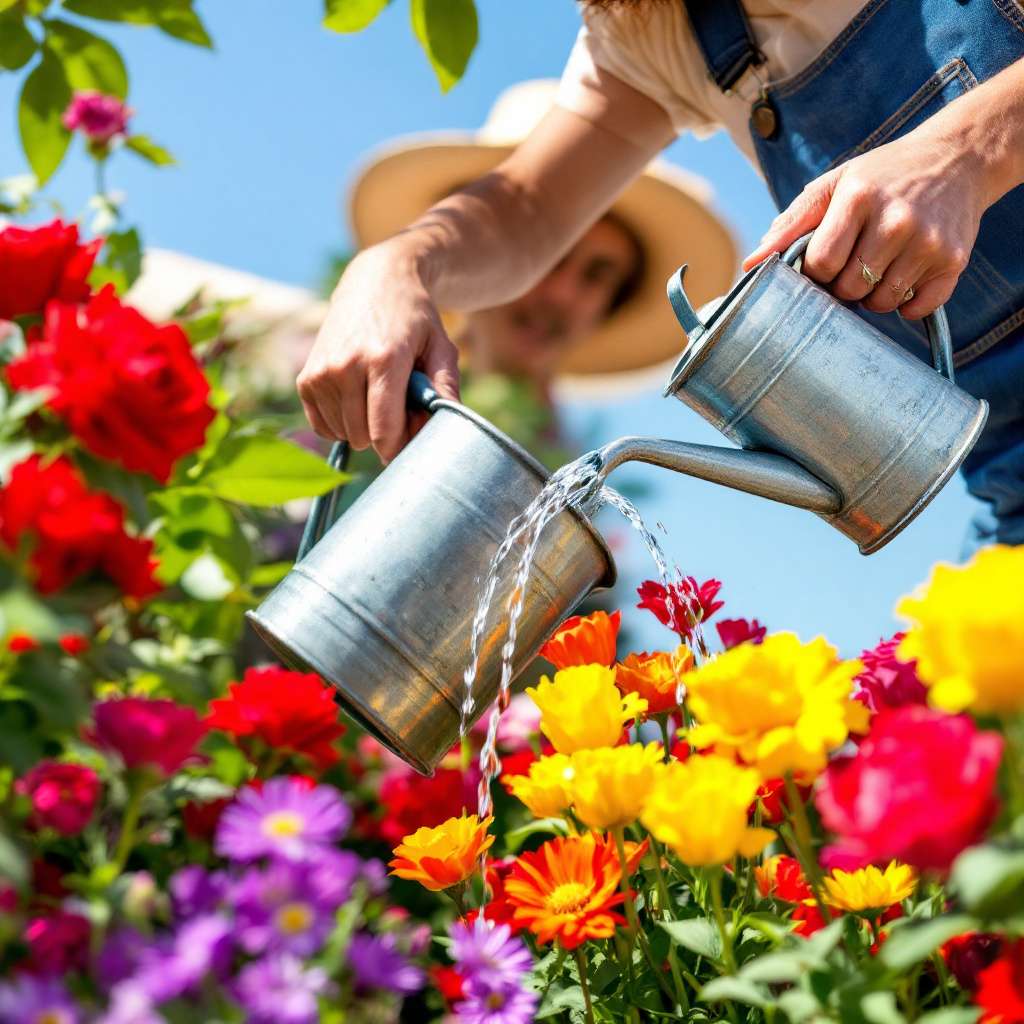Water temperature is a critical factor influencing the health and vitality of flowering plants. Different flower species exhibit varying reactions to water temperature, which can significantly impact their overall growth and development. The physiological effects of temperature on water, as it is absorbed by plant roots, play a substantial role in nutrient uptake and plant health. Each type of flower has an optimal water temperature range that enhances its ability to absorb vital nutrients necessary for robust growth.
When flowers are watered with water at temperatures outside their preferred range, it can lead to adverse physiological responses. For instance, cooler water may slow down the metabolic processes of some flowers, leading to decreased nutrient absorption and sluggish growth. Conversely, water that is too warm may disrupt root function, potentially leading to root rot or other health issues. Thus, understanding the specific temperature preferences of various flowers is essential for optimal care and cultivation.

The influence of water temperature extends beyond absorption; it also affects a plant’s respiration rates and overall energy levels. For example, studies have indicated that certain plants thrive in slightly warmer water, which can enhance their growth rates and flowering patterns. Conversely, others may prefer cooler water, enabling them to maintain their metabolic functions efficiently. Therefore, monitoring and adjusting water temperature can lead to healthier plants and more vibrant blooms.
As gardeners and plant enthusiasts seek to provide the best care for their flowers, recognizing the significance of water temperature will assist in fostering a conducive environment. By nurturing flowers within their optimal temperature ranges, one can optimize nutrient uptake and support the vitality and health of these beautiful plants. This careful attention to detail demonstrates a commitment to responsible gardening practices, ultimately resulting in thriving floral displays.
Ideal Water Temperature for Common Flower Types
When it comes to nurturing flowers, understanding the specific water temperature needs of various types is crucial. Different categories of flowers have adapted to distinct environmental conditions, which influence their ideal water temperature. Ensuring the right temperature not only supports healthy growth but also enhances bloom quality.

Annuals, known for their vibrant blooms and short life cycle, generally thrive in warmer water. The optimal water temperature for annual flowers, such as petunias or marigolds, is around 70 to 75 degrees Fahrenheit (21 to 24 degrees Celsius). This moderate warmth helps facilitate nutrient absorption during their active growth phase, especially in the spring and summer months.
Perennials, like peonies and black-eyed Susans, have different needs. Ideal water temperature ranges for perennials fall between 60 to 70 degrees Fahrenheit (15 to 21 degrees Celsius). Cooler water is essential during the initial growth stages to prevent shock and encourage strong root development. The slightly lower temperature mirrors the natural conditions of their growing season, particularly for those that thrive in temperate regions.
Tropical flowers, such as orchids and hibiscus, require warmer conditions to flourish. The suitable water temperature for these types is approximately 75 to 85 degrees Fahrenheit (24 to 29 degrees Celsius). Warm water promotes health and vitality in tropical species, as it mimics their native environments characterized by high humidity and warmer climates. Ensuring the water is at a consistent temperature is particularly important when maintaining these delicate blooms.

On the other hand, temperate flowers, which include species like daisies and snapdragons, thrive best in cooler water, typically ranging from 55 to 65 degrees Fahrenheit (13 to 18 degrees Celsius). This cooler approach is vital for maintaining their vigor as it closely resembles the temperature fluctuations of their native habitats.
Considering these temperature ranges per flower category is essential for promoting a healthy garden that not only thrives but also showcases beautiful blooms throughout different seasons.
Seasonal Considerations for Watering Flowers
Seasonal changes significantly impact the watering practices of flowers, particularly in relation to water temperature. As we transition through the seasons, both air and soil temperatures vary, influencing the ideal temperature for watering. During the spring, as temperatures begin to rise, the soil generally retains enough warmth, making moderately warm water suitable for irrigation. Warm water helps facilitate nutrient uptake, promoting healthy growth in young plants.
In contrast, the hot summer months often require flower growers to adjust their watering practices to accommodate significantly higher air temperatures. Watering with cooler water during this period can prevent thermal shock to the roots and help retain moisture in the soil longer. It is advisable to check the soil temperature regularly and ensure the water temperature is closely aligned with it, ideally within a few degrees to minimize stress on the plants.

As fall arrives, the cooling weather can lead to soil temperatures dropping, necessitating a shift back to warm water to encourage healthy root development before the onset of winter. During this seasonal transition, it is crucial to monitor both air and soil temperatures closely to make informed decisions about watering. In winter, flowers may require less frequent watering, and using lukewarm water can be beneficial in preventing damage from abrupt temperature changes. Watering in the late morning is advisable during winter months, allowing flowers to absorb moisture before temperatures drop in the evening.
Overall, being mindful of seasonal shifts and their effects on water temperature is essential for successful flower care throughout the year. By adjusting watering practices based on these changes, flower enthusiasts can foster robust growth and vibrant blooms regardless of the season.
Practical Tips for Managing Water Temperature for Flowers
Maintaining the appropriate water temperature is essential for the health and vitality of flowers. To achieve optimal conditions, consider implementing various methodologies for heating or cooling the water used for your plants. For instance, when using cold tap water, allow it to sit in a bucket for a few hours, allowing it to reach room temperature. This simple technique enhances the likelihood of plant absorption and minimizes shock.
If you need to warm the water, a gentle approach is favored. Use warm rather than hot water, as the latter can damage delicate roots. One effective method is to place the watering container in a sunny spot, allowing sunlight to naturally warm the water over time. Alternatively, you can thermally regulate the water using aquarium heaters designed for fish tanks, making them a viable option for heating small amounts of water safely.
To monitor and regulate water temperature accurately, consider investing in a reliable digital thermometer. This tool can help ensure that the water remains within the optimal temperature range suited for specific flower types. Additionally, digital moisture sensors can assist in determining when and how much to water, as under or over-watering combined with improper temperature can hinder plant growth.

It’s also vital to be aware of common watering mistakes. For instance, watering flowers during the hottest parts of the day may result in rapid evaporation, leaving plants without adequate hydration. Instead, opt for early morning or late afternoon watering sessions. Furthermore, be cautious not to use distilled or demineralized water exclusively, as it can lead to nutrient deficiencies. Instead, a balanced approach using good-quality water that maintains essential minerals ensures your flowers thrive.
In summary, proper management of water temperature involves heating or cooling techniques, monitoring tools, and best practices. Fostering an environment where flowers receive water at an ideal temperature, coupled with high-quality water, promotes healthier and more vibrant blooms.

